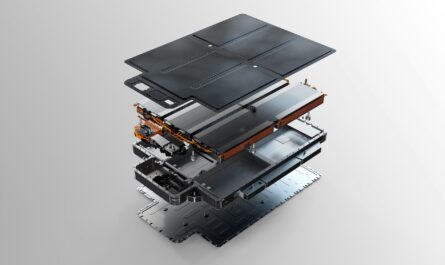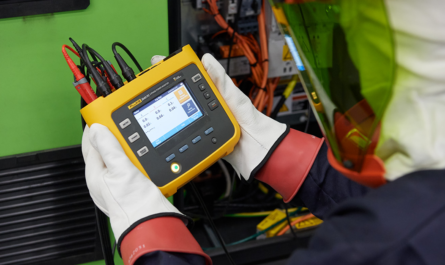The Rise of Distributed Generation
The electric grid that powers our homes and businesses is undergoing a significant transformation. Centralized power generation, where large power plants produce electricity and transmit it over long-distance transmission lines, has long been the conventional model. However, a newer distributed generation model is gaining traction across the world. Distributed generation refers to small-scale power generation close to the end-users of the electricity. With advantages like improved reliability, reduced transmission losses and emissions, distributed generation is becoming an important part of the global energy landscape.
Rise of Renewables
One of the major drivers of the growth in distributed generation has been the increased deployment of renewable energy sources like solar PV and wind turbines. These renewable technologies are well-suited for distributed applications as they can be installed on both residential and commercial buildings. The reduction in costs of solar PV modules and batteries in recent years has made residential solar highly economical in many parts of the world. According to the International Energy Agency, by 2024, over 50% of newly installed renewable capacity will come from distributed solar installations. In addition to solar, small wind turbines are also increasingly being adopted at homes, farms, and businesses to generate clean electricity on-site. The distributed nature of renewable energy matches well with the needs of a modern grid.
Improving Reliability and Resilience
Distributed generation brings reliability and resilience benefits to the power system. Having multiple small generation points reduces reliance on long transmission lines that are vulnerable to outages from severe weather or other natural disasters. Distributed solar and energy storage systems allow critical facilities like hospitals to maintain power even during grid outages. During Superstorm Sandy in 2012, many homes and businesses with solar panels and batteries were able to operate independently of the disrupted grid. With concerns over climate change increasing vulnerability to extreme weather, distributed generation makes the power grid more robust against disasters. The ability to generate power locally ensures continuous energy supply, which is crucial for many industrial and commercial activities.
Alleviating Transmission Constraints
Another advantage of distributed generation is that it reduces strain on the transmission and distribution network. By generating electricity close to load centers, distributed generation resources alleviate congestion on transmission lines. This defers or avoids expensive upgrades to transmission infrastructure to increase capacity. Areas experiencing rapid demand growth can deploy distributed solar to meet new electricity needs without the need for major transmission projects. This provides a quick solution compared to the lengthy process of obtaining approvals and permits for transmission line construction. As more small-scale clean energy comes online in distribution networks, it enhances power delivery and eases grid modernization requirements.
Economic and Environmental Benefits
From an economic perspective, distributed generation can reduce energy costs for homeowners, businesses and utilities. Capturing solar energy on-site dramatically lowers electricity bills over the long run. Utilities also see economic benefits from avoided transmission investments and reduced need for costly “peaker plants” that supply extra power during high demand periods. By utilizing local clean resources, distributed generation cuts emissions from centralized fossil fuel power plants. It makes better use of available renewable potential and accelerates the transition to low-carbon energy sources. State governments and municipalities eager to meet carbon reduction goals are encouraging distributed solar through rebate programs and net metering policies. As renewables diffuse deeper into communities nationwide, distributed generation will play a key role in curbing greenhouse gas emissions from the power sector.
Integrating with Advanced Technologies
Looking ahead, distributed generation is poised to integrate with emerging technologies like energy storage, electric vehicles and smart inverters to maximize benefits. Battery storage coupled with rooftop solar not only provides backup power but also shifts self-generated energy to times of high demand, hedging against peak rate charges. Cooperatives in many states have started “virtual power plant” projects aggregating residential battery capacity to provide grid services. Electric vehicles could one day provide their batteries for the same use when parked for long periods. Advances in inverters allow two-way power flows from customers to the grid. This enables distributed generation to supply power back to the network when supply exceeds on-site demand. Integrating distributed assets intelligently will turn homes, businesses and communities into active participants supporting a flexible, modern electric system.
Addressing Interconnection Challenges
While distributed generation offers a host of advantages, scaling it up will require overcoming some challenges as well. Interconnecting large numbers of small systems to the distribution grid introduces technical complexities around power quality, voltage regulation and protection coordination. Regulators must ensure seamless interconnection through proper standards while accommodating continuous technological progress in distributed energy resources. Utilities also face administrative burdens associated with managing a much larger number of smaller generation systems. Streamlining interconnection procedures and permitting processes is crucial to unleash distributed generation’s full potential. Finally, regulatory reforms may be needed to modernize utility business models away from simple reliance on electricity sales volumes. Comprehensive policies can help transition to an equitable system that fairly values grid services from both centralized and distributed resources.
Conclusion
As technology costs decline and grid resilience concerns rise, distributed generation is emerging as a major part of the future energy landscape. Its rapid growth provides an opportunity to accelerate clean energy adoption and realize both economic and environmental benefits at a localized level. With proper standards and market structures in place, distributed resources could balance supply and demand more efficiently while enhancing power system operation. While interconnection challenges exist, innovative solutions, advanced use cases, and enabling public policies will drive the continued advancement of distributed generation worldwide. A balanced, hybrid system combining large centralized plants with distributed assets can power our communities more sustainably. This transformation unfolding across the electric grid heralds an exciting chapter in global efforts towards a carbon-neutral future.
*Note:
1. Source: Coherent Market Insights, Public sources, Desk research
2. We have leveraged AI tools to mine information and compile it



